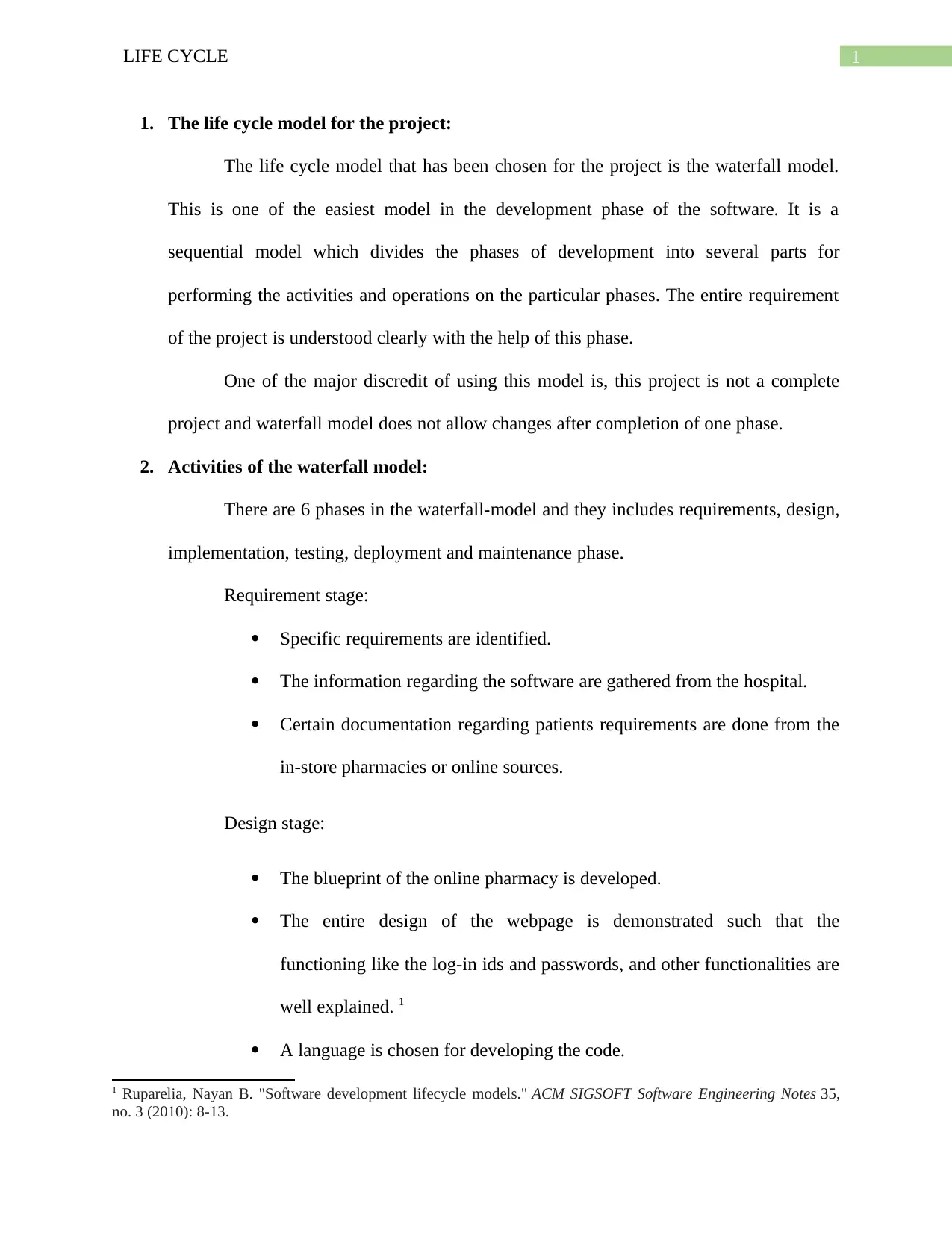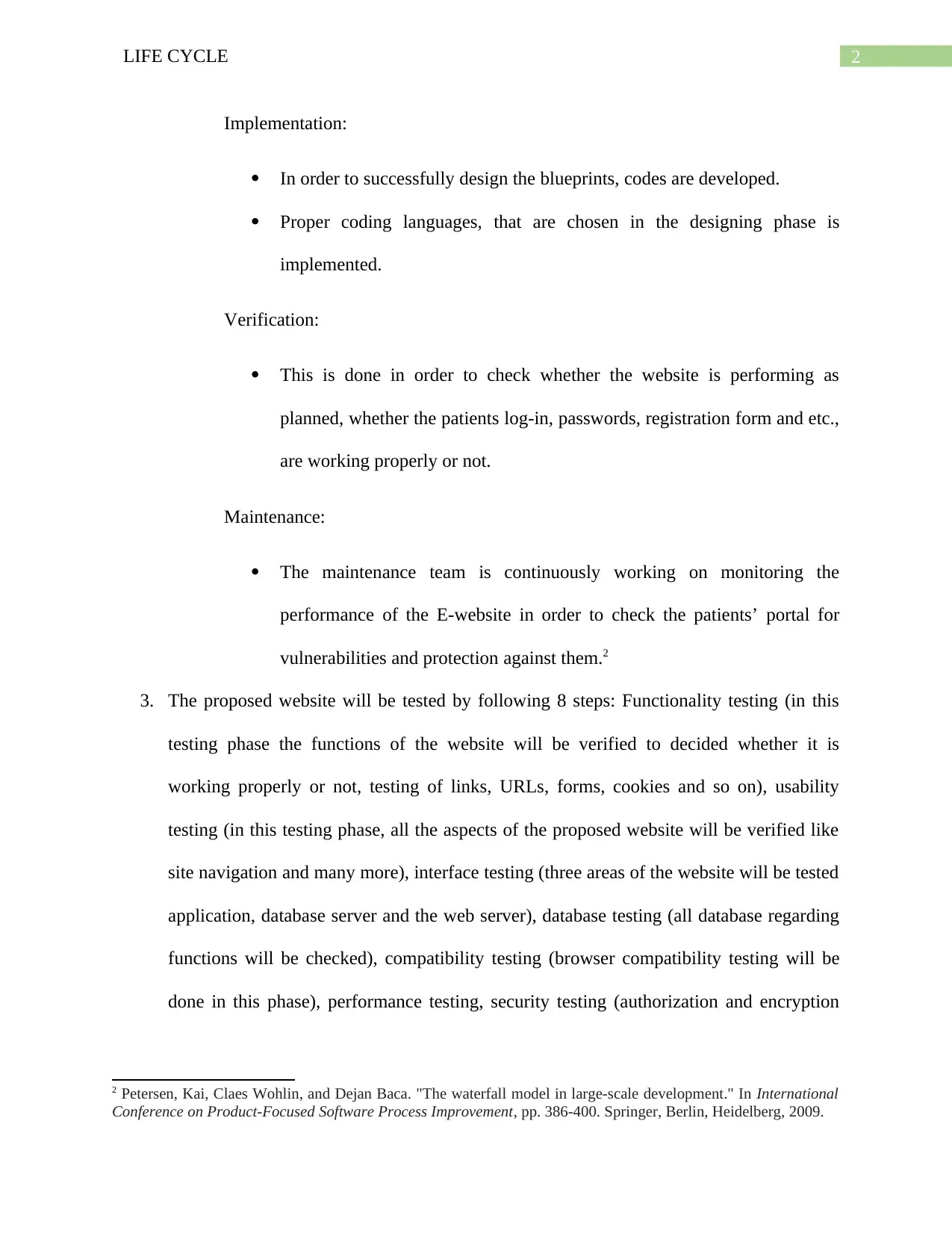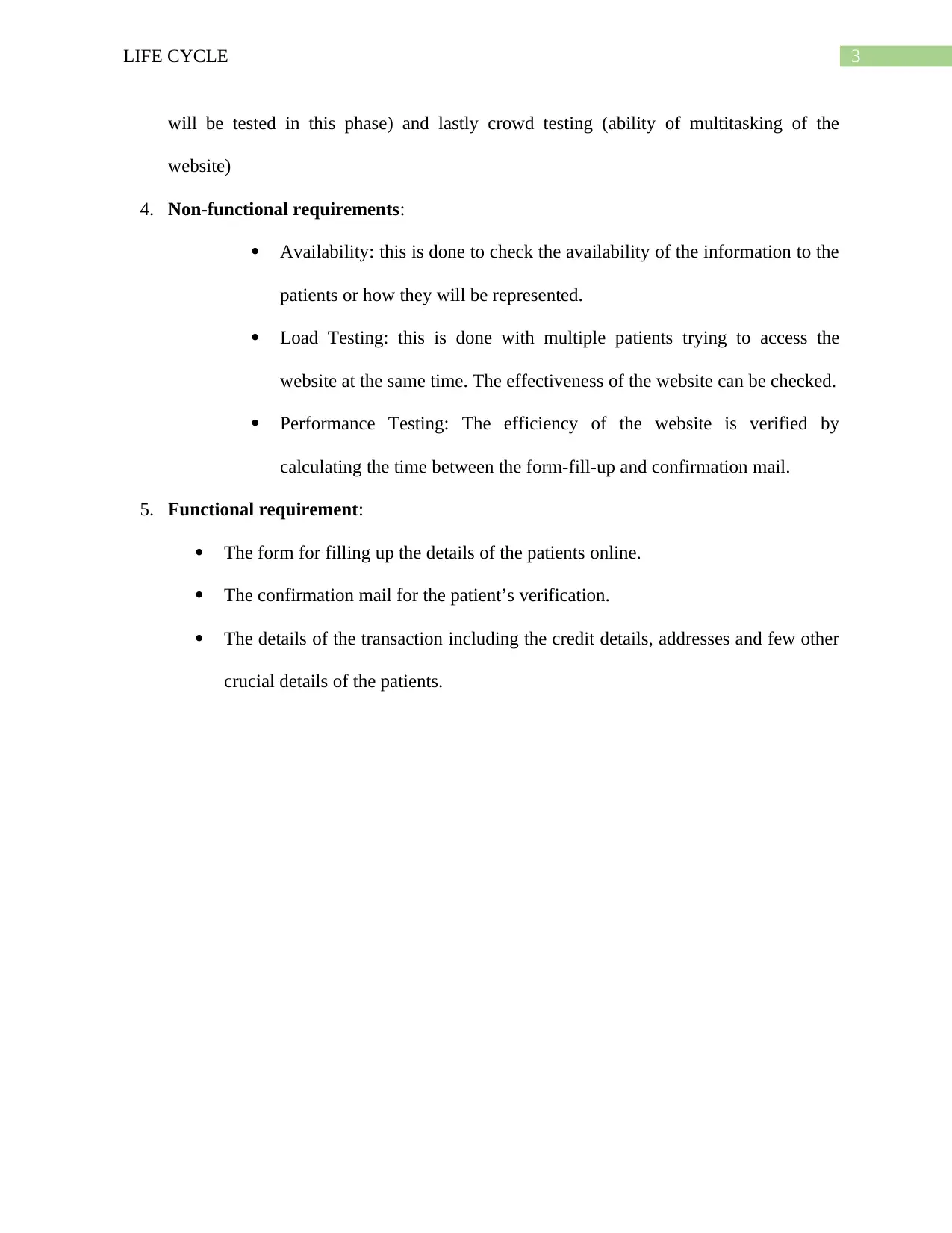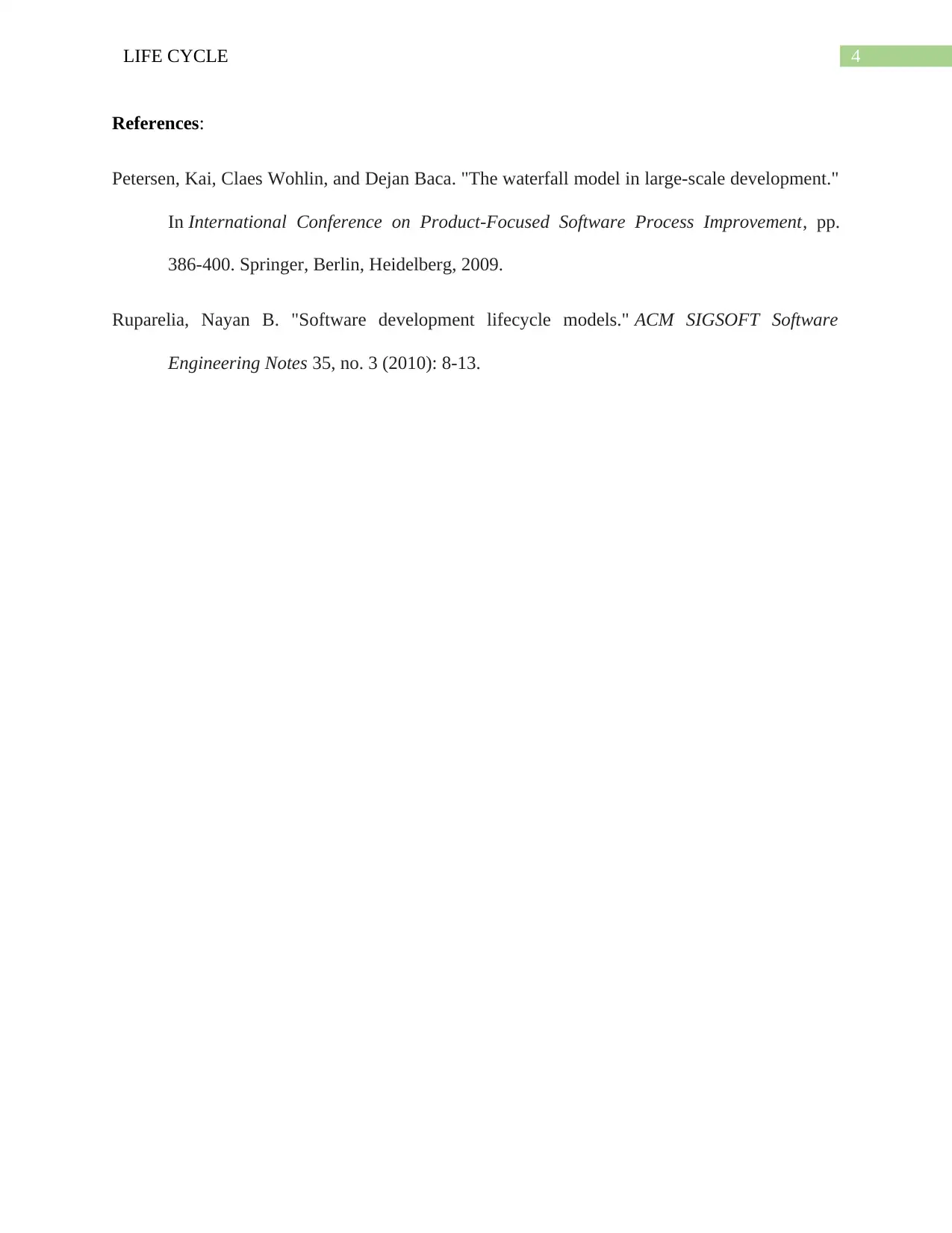Implementing the Waterfall Model for Online Pharmacy Software
VerifiedAdded on 2022/08/17
|5
|681
|26
Report
AI Summary
This report analyzes the Waterfall Model within the context of software development, specifically for an online pharmacy. The assignment begins by introducing the Waterfall Model, highlighting its sequential nature and the various phases involved, including requirements gathering, design, implementation, testing, and maintenance. The report details the activities within each phase, such as gathering requirements from the hospital, designing the website's architecture, coding, and performing verification tests. It also outlines the different types of testing, like functionality, usability, and security. The report then discusses non-functional requirements like availability, load testing, and performance testing, along with functional requirements such as online patient forms and transaction details. The report concludes with references to relevant literature on the Waterfall Model, providing a comprehensive understanding of the software development life cycle and its application.
1 out of 5












![[object Object]](/_next/static/media/star-bottom.7253800d.svg)